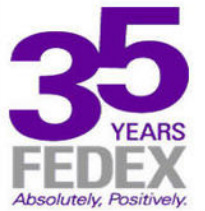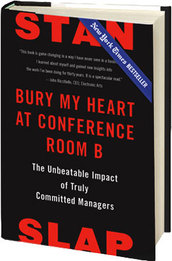| | David Foster Wallace, one of my favorite authors, gave a graduation speech called, “This is Water.” Cleaned up and shortened for youtube (worth the 9 minutes), Wallace starts by telling about an older fish greeting two young fish, “Good morning boys, how’s the water?” After he swims off, one young fish says to the other, “What the hell is water?” |
And I didn't either. Jack Daly once challenged me, “Do you have a culture by default or a culture by design?” “Um,” I thought, in 2003.
| Core values really hum when they are also brand pillars. The reasons someone buys from you are the same reasons why someone works for you. Fedex’s top core value is safety. Running the biggest airline in the world, Fedex boasted of only one fatality in 35 years of operations, when I visited them about five years ago. Reliability screams from every aspect of their operation. And the story of how they revolutionized delivery with “Absolutely, Positively Next Day” has become business legend. The "absolutely positively" part is what really mattered, and grew naturally out of their values. |
Another of M5’s values was “Be Honest.” We built technology, a highly transparent website showing the world our service foibles in real-time, to help us be honest with our customers and the market. We rewarded someone with a trip to Space Camp in Alabama for telling a customer bad news. We fired. Three $500 bottle of wine ordered at staff dinner wasn’t the problem, not "fessing up" after sobering up sent someone off the island. We created stories about “Be honest,” and deepened it. We designed our culture with intent.
One problem is that the stated core values aren’t always the real ones. As with mission, you have to discover core values — if they are “aspirationial” posing as “core,” the leaders appear hypocritical, and the values can become irrelevant. Pat Lencioni has a great riff on core vs. other types of values in,“The Advantage." We shifted the words a few times as we tried to better describe our values, but the truth underneath didn’t move much. Phillip Kim, a co-founder and always the skeptical engineer, had his own way of describing M5’s strengths, “Techies who do customer service well.” This was consistent and complementary to our other descriptions, so it helped.
| Another problem is that company values may not be your staff’s own values. Stan Slap’s book, “Bury My Heart In Conference Room B,” has a particular take on this. I saw him speak at Microsoft, and I read his book after Lanham Napier of Rackspace said he had hired him. Slap’s approach makes building culture possible for big companies. Relax, says Slap. Back-off. It is ok for different values to be defined by different leaders in different parts of the company. The idea is to liberate staff to be true to real values, and energized to follow authentically value-driven bosses. It's better than a sharp stick in the eye, and hopefully the values are consistent with how leadership is directing the company. |
Top VC Sequoia (investments include Zappos and Rackspace) have made culture a focus. To close, here’s a great conversation with Alfred Lin and AirBnB founder about how core values are Air BnB’s rocket fuel:


 RSS Feed
RSS Feed